Bezos' Blue Origin teams up with U.S. military 'rocket cargo' program
Saturday, 01 January 2022 00:56 Jeff Bezos' Blue Origin has teamed up with the U.S. military to explore the possibility of using rockets to transport cargo and people, U.S. Transportation Command announced Monday.
The Amazon founder's Blue Origin rocket company and USTRANSCOM, which oversees global military logistics, signed the cooperative research and development agreement, CRADA, on Dec. 17, according to the announcem
Jeff Bezos' Blue Origin has teamed up with the U.S. military to explore the possibility of using rockets to transport cargo and people, U.S. Transportation Command announced Monday.
The Amazon founder's Blue Origin rocket company and USTRANSCOM, which oversees global military logistics, signed the cooperative research and development agreement, CRADA, on Dec. 17, according to the announcem Biden administration extends ISS operations through 2030
Saturday, 01 January 2022 00:56 The Biden administration has extended operations on theInternational Space Station through 2030 to "enable a seamless transition" to commercial space stations, NASA Administrator Bill Nelson announced Friday.
Nelson said in a statement that NASA will continue working with the European Space Agency, Japan Aerospace Exploration Agency, Canadian Space Agency, and Russia's StateSpace Corporati
The Biden administration has extended operations on theInternational Space Station through 2030 to "enable a seamless transition" to commercial space stations, NASA Administrator Bill Nelson announced Friday.
Nelson said in a statement that NASA will continue working with the European Space Agency, Japan Aerospace Exploration Agency, Canadian Space Agency, and Russia's StateSpace Corporati Astra Space faces critics, skeptics as it plans Florida launch
Saturday, 01 January 2022 00:56 Astra Space, one of few new rocket companies to reach orbit, is facing stiff criticism from skeptics about its business model as it plans its first launch from Florida..
The California-based company announced Dec. 6 that it planned to launch NASA satellites in January from Cape Canaveral Space Force Station. Since then, the company has released no further details about a launch date and ha
Astra Space, one of few new rocket companies to reach orbit, is facing stiff criticism from skeptics about its business model as it plans its first launch from Florida..
The California-based company announced Dec. 6 that it planned to launch NASA satellites in January from Cape Canaveral Space Force Station. Since then, the company has released no further details about a launch date and ha Zero gravity conditions in space may advance stem cell research, scientists say
Saturday, 01 January 2022 00:56 The zero-gravity conditions in outer space may hold the key to producing large batches of stem cells for medical research and treatment of various diseases on Earth, according to a paper published Thursday by Stem Cell Reports.
Biomanufacturing, a type of stem cell production that uses biological materials such as microbes to produce substances and biomaterials suitable for use in resea
The zero-gravity conditions in outer space may hold the key to producing large batches of stem cells for medical research and treatment of various diseases on Earth, according to a paper published Thursday by Stem Cell Reports.
Biomanufacturing, a type of stem cell production that uses biological materials such as microbes to produce substances and biomaterials suitable for use in resea Quadrantids offer winter meteor spectacle
Saturday, 01 January 2022 00:56 Northern hemisphere stargazers can look forward to what could be 2022's best meteor shower on 3-4 January. Observers enjoying dark skies could see 50 or more meteors an hour that night, as the Quadrantids shower reaches its peak.
Meteors are the result of small particles entering the Earth's atmosphere at high speed, typically around 40 km per second for the Quadrantids. The pieces of debr
Northern hemisphere stargazers can look forward to what could be 2022's best meteor shower on 3-4 January. Observers enjoying dark skies could see 50 or more meteors an hour that night, as the Quadrantids shower reaches its peak.
Meteors are the result of small particles entering the Earth's atmosphere at high speed, typically around 40 km per second for the Quadrantids. The pieces of debr Three rings to bind them in ancient cosmic history
Saturday, 01 January 2022 00:56 Astronomers have managed to link the properties of the inner planets of our solar system with our cosmic history: with the emergence of ring structures in the swirling disk of gas and dust in which these planets were formed. The rings are associated with basic physical properties such as the transition from an outer region where ice can form where water can only exist as water vapor. The astrono
Astronomers have managed to link the properties of the inner planets of our solar system with our cosmic history: with the emergence of ring structures in the swirling disk of gas and dust in which these planets were formed. The rings are associated with basic physical properties such as the transition from an outer region where ice can form where water can only exist as water vapor. The astrono China heads launch list of space rockets
Saturday, 01 January 2022 00:56 China launched a Long March 3B carrier rocket at Xichang Satellite Launch Center in Sichuan province early on Thursday, marking the completion of the country's annual launch schedule.
The rocket blasted off at 0:43 am and transported the Communication Technology Demonstrator 9 experimental satellite into a geosynchronous orbit, China Aerospace Science and Technology Corp, the nation's lead
China launched a Long March 3B carrier rocket at Xichang Satellite Launch Center in Sichuan province early on Thursday, marking the completion of the country's annual launch schedule.
The rocket blasted off at 0:43 am and transported the Communication Technology Demonstrator 9 experimental satellite into a geosynchronous orbit, China Aerospace Science and Technology Corp, the nation's lead White House commits to ISS extension
Friday, 31 December 2021 21:13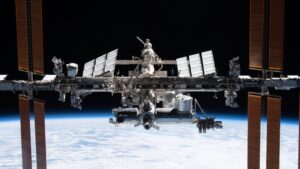
The Biden administration formally supports extending operations of the International Space Station through the end of the decade, an announcement that is neither surprising nor addresses how to get all the station’s partners, notably Russia, to agree on the station’s future.
NASA funds thermal control solutions for harsh lunar environments
Friday, 31 December 2021 17:50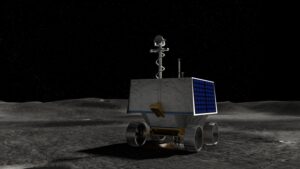
Advanced Cooling Technologies (ACT) has won NASA funding for thermal control solutions that enable vehicles and other equipment to survive harsh lunar environments without an active power source.
NASA Plans Coverage of Webb Space Telescope Deployments
Thursday, 30 December 2021 15:12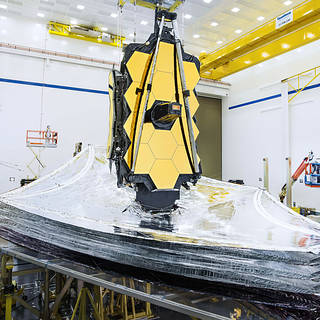 Over about the next two weeks, NASA will provide broadcast coverage, a media briefing, and other updates on major deployment milestones for the James Webb Space Telescope, the world’s largest and most powerful space science telescope.
Over about the next two weeks, NASA will provide broadcast coverage, a media briefing, and other updates on major deployment milestones for the James Webb Space Telescope, the world’s largest and most powerful space science telescope. Update: NASA Plans Coverage of Webb Space Telescope Deployments
Thursday, 30 December 2021 15:12 Over about the next two weeks, NASA will provide broadcast coverage, media briefings, and other updates on major deployment milestones for the James Webb Space Telescope, the world’s largest and most powerful space science telescope.
Over about the next two weeks, NASA will provide broadcast coverage, media briefings, and other updates on major deployment milestones for the James Webb Space Telescope, the world’s largest and most powerful space science telescope. Webb separation from Ariane 5
Thursday, 30 December 2021 13:00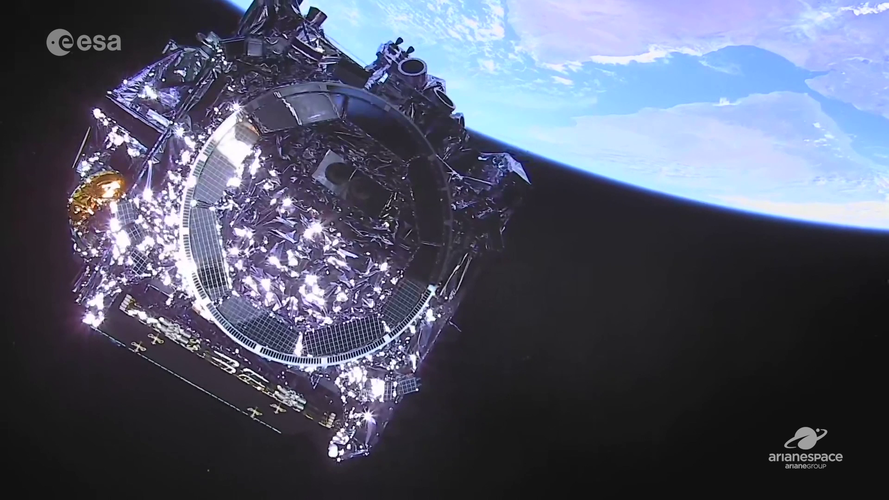 Video:
00:03:04
Video:
00:03:04
This real-time video shows the separation of the James Webb Space Telescope from the Ariane 5 launch vehicle and the subsequent solar array deployment.
Webb’s launch on an ESA-provided Ariane 5 rocket was performed by Arianespace on behalf of ESA from Europe’s Spaceport in French Guiana, at 12:20:07 GMT (13:20:07 CET) on 25 December 2021.
Webb separation from the Ariane 5 occurred at 12:47:14 GMT (13:47:14 CET) with solar array deployment starting 69 seconds later.
Thanks to Ariane 5’s highly precise launch trajectory Webb’s solar array was able to deploy soon after separation from the Ariane 5, capturing sunlight to
Iranian state TV says Tehran launched rocket into space
Thursday, 30 December 2021 12:56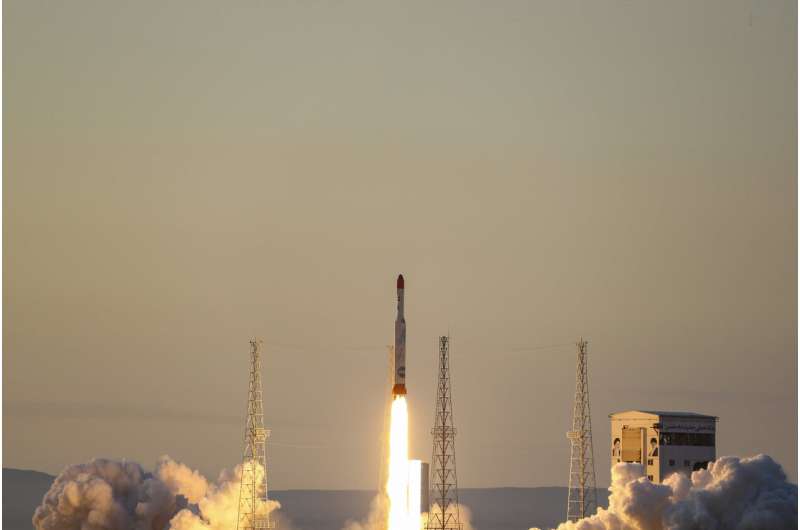
Firefly halts launch preparations after federal government seeks divestment of foreign ownership
Thursday, 30 December 2021 12:04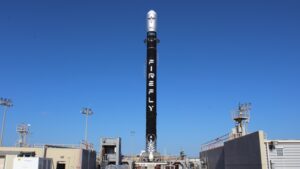
Firefly Aerospace is pausing preparations for its next Alpha launch, originally scheduled for early 2022, after the government asked its largest shareholder to divest its stake for national security reasons.
Putin hails multiple launch test of hypersonic missile
Thursday, 30 December 2021 11:49 President Vladimir Putin said Friday the Russian military successfully fired a simultaneous salvo of its Zircon hypersonic missiles, calling it "a big event" for the country.
As world powers race to develop advanced weaponry, Russia has carried out a number of successful tests of its Zircon hypersonic cruise missile.
This was however the first time that Russian authorities reported a su
President Vladimir Putin said Friday the Russian military successfully fired a simultaneous salvo of its Zircon hypersonic missiles, calling it "a big event" for the country.
As world powers race to develop advanced weaponry, Russia has carried out a number of successful tests of its Zircon hypersonic cruise missile.
This was however the first time that Russian authorities reported a su 
